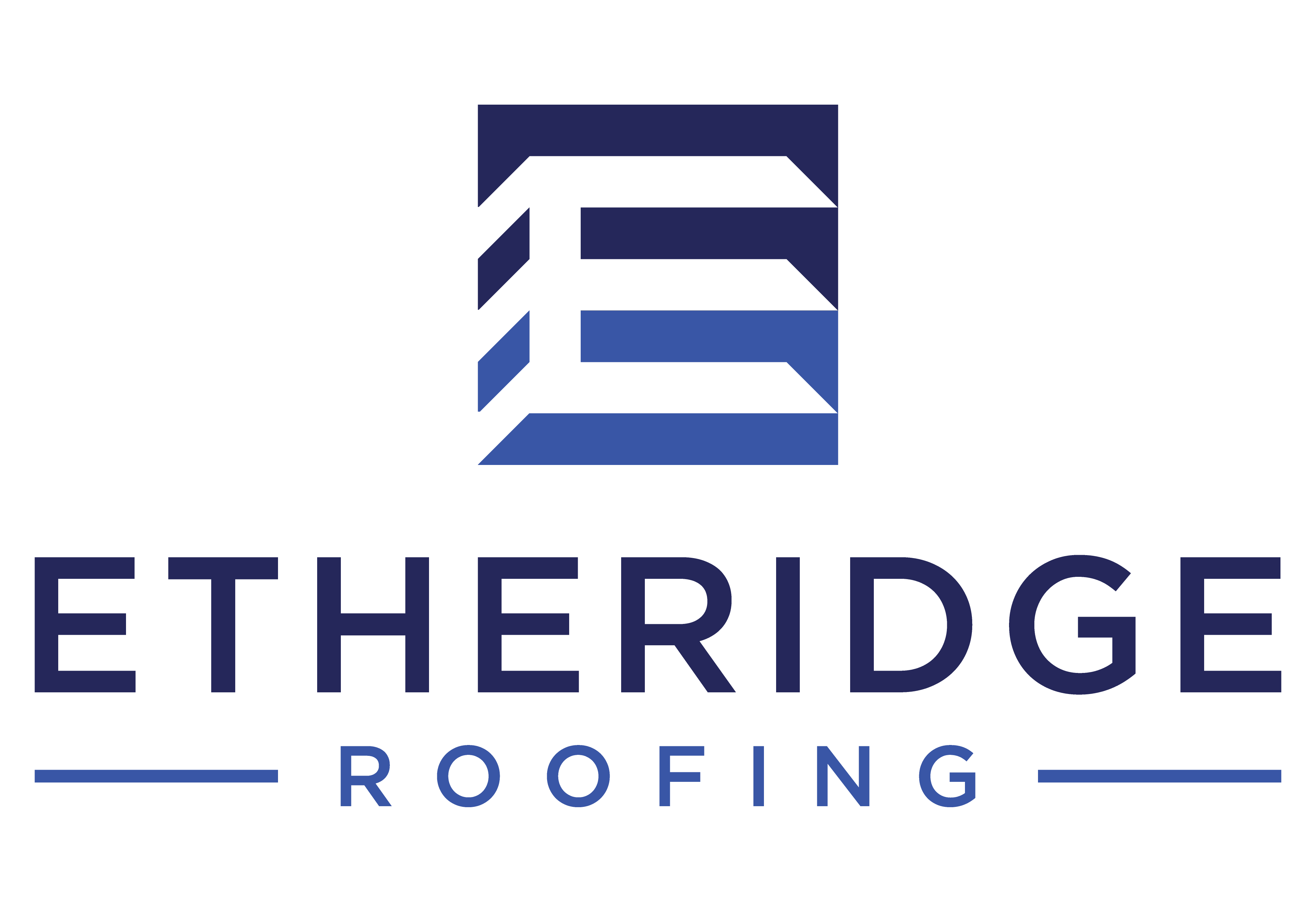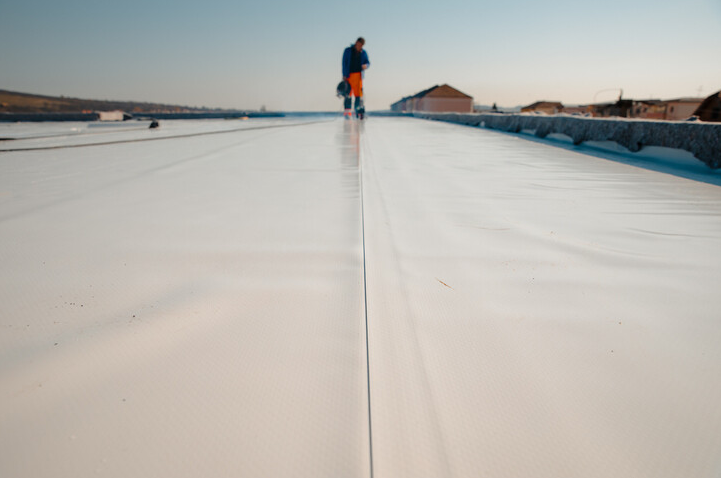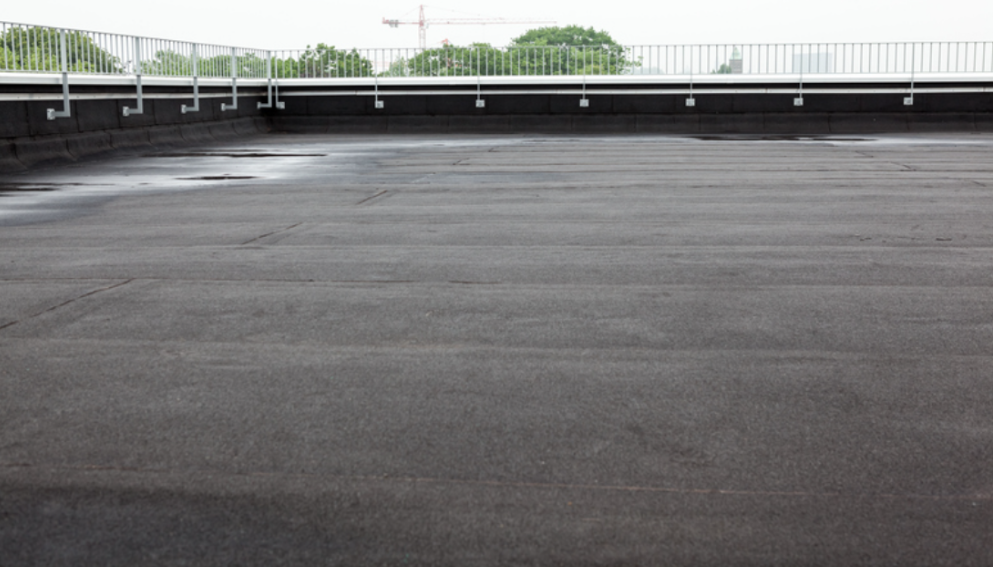Defending Your Commercial Flat Roof: A Comprehensive Guide to Weather Resistance
As a commercial property owner, ensuring the longevity and durability of your building's structure is a top priority. One crucial aspect of this is weather resistance, particularly when it comes to your commercial flat roof. Weather patterns can be unpredictable and harsh, and your flat roof must be able to withstand various elements such as rain, wind, snow, and extreme temperatures. In this comprehensive guide, we will delve into the world of weather resistance for commercial flat roofs and provide you with the knowledge and tips to defend your roof against any weather conditions.
Recognizing the Impact of Weather on Commercial Flat Roofs
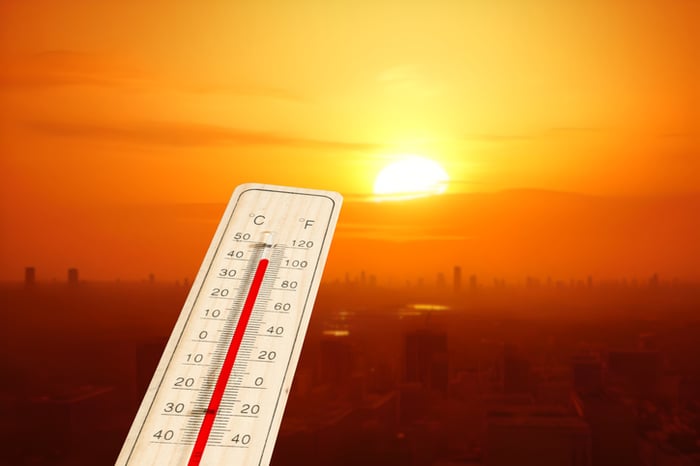
The weather can have a significant impact on the durability and longevity of your roof, so it's crucial to recognize how different weather elements can affect it. Here are some key points to consider:
1. Rain: Heavy rain can cause pooling or ponding on flat roofs if proper drainage systems are not in place. This can lead to water infiltration and potential leaks. Make sure your roof has adequate slope and effective drainage to prevent water buildup.
2. Wind: Strong winds can uplift the roofing materials on flat roofs, especially if they are not securely installed. This can result in extensive damage and compromise the weather resistance of the roof. Consider using wind-resistant materials and ensuring proper installation to minimize the risk of wind-related damage.
3. Heat: Heat can take a toll on flat roofs, especially in hot climates. The expansion and contraction of roofing materials due to heat can lead to cracks and splitting. Choose materials with high reflectivity and insulation properties to tackle heat. Applying a reflective coating can also help reduce heat transfer and lower energy costs.
4. Snow: Snow can be a significant challenge for flat roofs, especially in areas with heavy snowfall. The weight of snow can put excessive stress on the structure, potentially causing it to collapse. Ensure your roof has sufficient structural support to handle heavy snow loads. Regular snow removal and proper insulation can also help prevent snow-related damage.
By recognizing the impact of weather on commercial flat roofs, you can take proactive measures to enhance their weather resistance. This includes selecting appropriate materials, implementing advanced roofing techniques, conducting regular maintenance, and considering cost-effective solutions. Consult with a roofing professional to assess the specific weather challenges in your area and develop a weather resistance strategy tailored to your needs. With the right preparations in place, your commercial flat roof will be well-equipped to withstand any weather conditions.
Choosing the Right Material for Weather Resistance
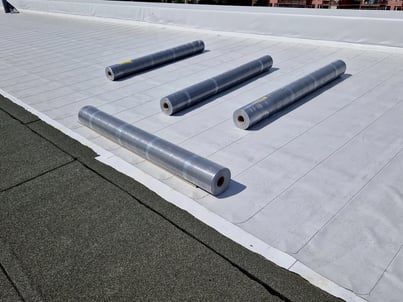
When it comes to weather resistance for your commercial flat roof, choosing the right materials is essential. The materials you select will determine how well your roof can withstand various weather elements.
One important factor to consider is the type of material itself. Different materials have different levels of weather resistance. For example, some materials are more prone to damage from heavy rain or wind, while others are more resilient. Additionally, consider the durability and lifespan of the materials. Opt for materials that have a proven track record of withstanding the weather conditions in your area for an extended period of time.
Another key consideration is the installation process. Ensure that the materials are properly installed by experienced professionals who are knowledgeable in weatherproofing techniques. Improper installation can lead to gaps or vulnerabilities in the roof, allowing water, wind, or heat to penetrate the structure.
Lastly, think about maintenance requirements. Some materials may require more frequent maintenance to maintain their weather resistance. Factor in the cost and time associated with maintenance when making your decision.
By carefully considering these factors, you can choose materials that will provide optimal weather resistance for your commercial flat roof. Consult with a roofing professional to determine the best options for your specific needs.
Advanced Roofing Techniques for Weather-proofing Flat Roofs

- Incorporating a slope: Adding a slight slope to your flat roof can help with water drainage, preventing pooling or ponding. This can be achieved through the use of tapered insulation or crickets, which are raised sections that divert water away from low spots.
- Installing a vapor barrier: A vapor barrier helps to prevent moisture from infiltrating the roof, which can lead to rot, mold, and other issues. This barrier is typically placed underneath the roofing materials, providing an extra layer of protection against water intrusion.
- Implementing a roof membrane: A roof membrane is a durable layer that acts as a waterproof barrier for your flat roof. It is typically made of synthetic materials such as EPDM or TPO, which are known for their excellent weather resistance. This membrane is installed over the insulation, providing a seamless and watertight surface.
- Utilizing roof flashing: Flashing is used to protect vulnerable areas of the roof, such as seams, edges, and penetrations. It is typically made of metal or a synthetic material, providing an additional layer of protection against water infiltration. Proper installation of flashing is essential for ensuring its effectiveness in weather-proofing the roof.
- Incorporating a green roof: A green roof is a sustainable option that involves planting vegetation on the roof surface. This can provide added insulation, reducing heat transfer, as well as absorb rainfall, reducing stormwater runoff. Green roofs can enhance the weather resistance of a flat roof while also providing environmental benefits.
By implementing these advanced roofing techniques, you can enhance the weather-proofing capabilities of your commercial flat roof. These techniques are designed to prevent water infiltration, improve insulation, and protect vulnerable areas, ensuring that your roof can withstand even the harshest weather conditions. Consult with a roofing professional to determine the best techniques for your specific needs and budget.
Regular Maintenance Practices to Enhance Weather Resilience
Regular maintenance is essential for enhancing the weather resilience of your commercial flat roof. By implementing regular maintenance practices, you can identify and address any issues before they escalate into significant problems. Here are some key maintenance practices to consider:
1. Schedule Routine Inspections: Regularly inspect your roof for any signs of damage, such as cracks, loose seams, or pooling water. Inspections should be conducted at least twice a year, ideally in the spring and fall, and after any severe weather events.
2. Clear Debris: Keep your roof free from debris such as leaves, branches, or dirt. Accumulated debris can clog drains and gutters, leading to water backup and potential water infiltration.
3. Check and Clean Gutters: Regularly check and clean your gutters to ensure they are clear of any debris. This will help prevent water buildup and potential damage to your roof.
4. Maintain Proper Drainage: Ensure that your roof's drainage systems, such as gutters, downspouts, or drains, are functioning effectively. Clear any blockages and repair any damaged components to prevent water from pooling on the roof.
5. Trim Surrounding Trees: Trim any overhanging branches or trees near your roof to prevent them from causing damage during high winds or storms.
6. Repair and Seal Cracks: Promptly repair any cracks or damage to the roofing membrane or flashing. This will help maintain the integrity of the roof and prevent water infiltration.
7. Address Leaks Immediately: If you notice any signs of leaks, such as water stains on the ceiling or damp areas, address them immediately. Identify the source of the leak and repair it to prevent further damage.
8. Keep Records: Keep a detailed record of all maintenance activities, inspections, and repairs. This will help you track the condition of your roof and identify any recurring issues that need to be addressed.
Cost-effective Solutions for Long-term Weather Protection

In addition to selecting the right materials and implementing advanced roofing techniques, cost-effective solutions for long-term weather protection can play a crucial role in defending your commercial flat roof. Here are some options to consider:
1. Regular Maintenance: Investing in regular maintenance is one of the most cost-effective ways to protect your flat roof from weather damage. By scheduling routine inspections and addressing any issues promptly, you can prevent minor problems from escalating into major repairs.
2. Roof Coatings: Applying a protective coating to your flat roof can provide an extra layer of defense against weather elements. These coatings are cost-effective, easy to apply, and can extend the lifespan of your roof by preventing leaks and reducing UV damage.
3. Insulation: Proper insulation is key to protecting your roof from heat loss, which can lead to ice dams and other weather-related issues. By adding insulation to your flat roof, you can improve energy efficiency, reduce heating costs, and enhance weather resistance.
4. Drainage Systems: Installing an effective drainage system is essential for preventing ponding water and potential water damage. Cost-effective options include adding gutters, downspouts, or drains that efficiently divert water away from the roof.
5. Snow Guards: If you live in an area with heavy snowfall, installing snow guards on your flat roof can help prevent snow accumulation and minimize the risk of roof collapse. Snow guards are an affordable solution that can protect your roof from the weight of snow and ice.
By incorporating these cost-effective solutions into your weather resistance strategy, you can safeguard your commercial flat roof without breaking the bank. Consult with a roofing professional to determine the best options for your specific needs, budget, and climate conditions.
Conclusion
In this comprehensive guide, we have explored the world of weather resistance for commercial flat roofs, providing you with valuable knowledge and tips to defend your roof against any weather conditions. We began by recognizing the impact of weather on commercial flat roofs, highlighting the potential risks posed by rain, wind, heat, and snow. By understanding these factors, you can take proactive measures to enhance the weather resistance of your roof.
Next, we delved into choosing the right materials for weather resistance. We discussed the importance of selecting materials with proven durability and weather resistance, as well as the significance of proper installation and maintenance requirements.
We then explored advanced roofing techniques that can further enhance the weather resistance of your commercial flat roof. Incorporating a slope, installing a vapor barrier, implementing a roof membrane, utilizing roof flashing, and incorporating a green roof are all strategies that can bolster your roof's ability to withstand harsh weather conditions.
Regular maintenance practices were also emphasized as crucial for enhancing weather resilience. By conducting routine inspections, clearing debris, maintaining proper drainage, and addressing any issues promptly, you can prevent minor problems from escalating into major repairs.
Finally, we explored cost-effective solutions for long-term weather protection. Regular maintenance, roof coatings, insulation, drainage systems, and snow guards are all affordable options that can contribute to the longevity and durability of your flat roof.
By incorporating these strategies into your weather resistance strategy, consulting with a roofing professional, and staying proactive, you can ensure that your commercial flat roof remains resilient against any weather conditions. So, take the necessary steps today to defend your roof and protect your investment for years to come.
Posts by Tag
Recent Posts
Popular Posts
Selecting the appropriate roofing system is...
If you're looking for a green roofing solution...
Your roof is one of the most important parts of...
Recent Posts
With so many options available in the world of...
Understanding the signs of wear, evaluating the...
